The Pivot Trail 429 Does It All
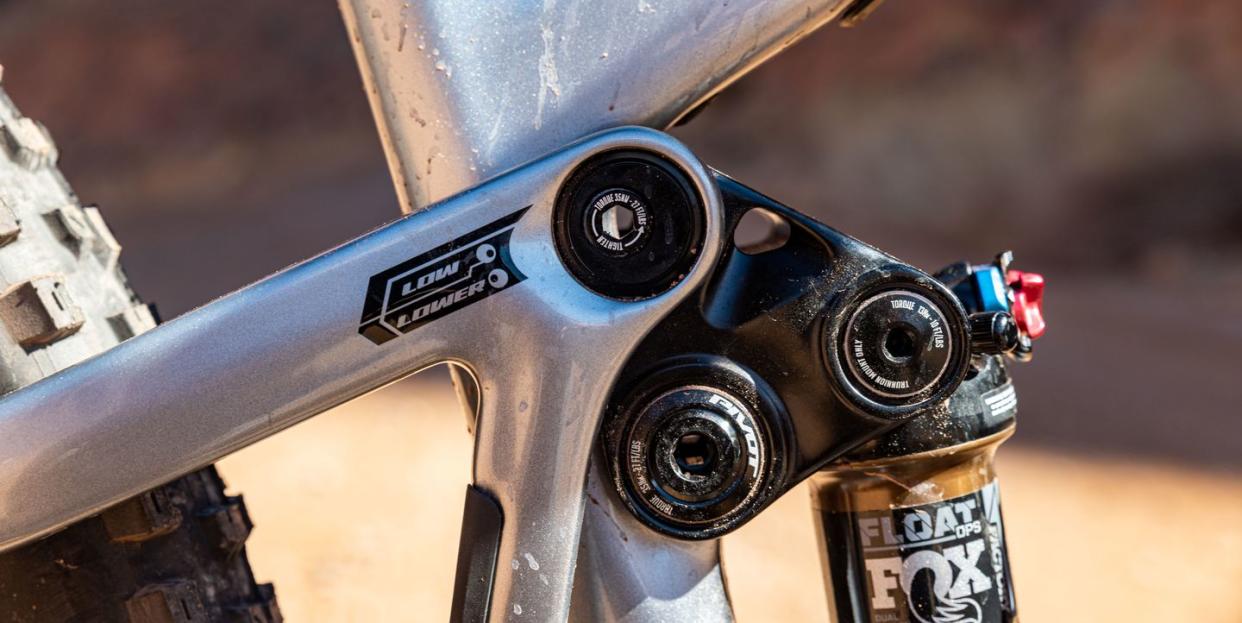
The Takeaway: the 120/130mm trail category is filled with great bikes—the Trail 429 might be the best.
5.9 lb. frame with shock—300 grams lighter than the previous generation
Updated geometry with flip-chip: longer reach, top tube, and wheelbase; steeper seat tube angle; slacker head tube angle
Revised suspension layout with vertical shock
Rear suspension more sensitive from the top, more progressive at the end
14 builds priced $5,599 to $12,499
Enduro build option with 140mm Fox 36 fork and DPX2 shock
Large water bottle fits inside the front triangle on all sizes
Price: $8,899 (Team XTR as tested)
Weight: 27.2 lb. (Medium)
View Gallery
Meet the new, third-generation, Pivot Trail 429. This is the company’s 120/130mm (rear/front) trail bike, which happens to be Pivot’s best-selling model. According to Chris Cocalis, Pivot’s president, “For what mountain biking is for most people, the 120mm bike is the bike that does it all for them.”
A bike like this carries a lot of expectations: It has to climb almost like an XC bike, yet descend almost like an enduro bike. It has to have handling that balances low-speed accuracy with high-speed stability. And the suspension needs to pedal efficiently and flow down demanding descents.
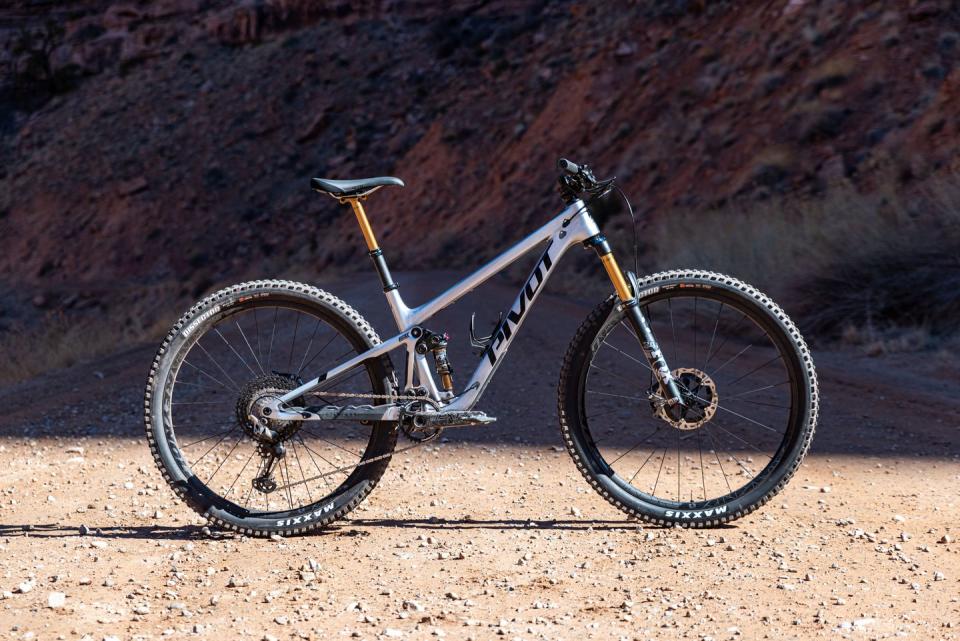
It is a bike that will be used by so many different riders in different ways and on trails all over the world, and those uncountable scenarios makes it incredibly difficult to get right. But sometimes a company gets exceptionally close to producing a bike that meets all those diverse needs and expectations. As proof, I offer the Trail 429’s primary competition: Evil’s Following, the Santa Cruz Tallboy, and the Ibis Ripley—three of the very best mountain bikes you can buy today.
If the new Trail 429 can meet that group’s average, it will be an amazing bike. If it exceeds the completion, it will be something truly special.
Pivot Trail 429 Ride Impressions
For my last ride on the new Trail 429 before I wrote this review, I went over to Moab and did the HyMasa/Captain Ahab loop. This is a cornucopia of rock slab and chunk with numerous technical uphill moves, plenty of alternate lines on the descent, and many punchy bits. The kind of trails that challenge your skills on the climb and challenge your fitness on the descent.
Frankly, a 120/130mm bike with pinner wheels and a Fox 34 and on the front wouldn’t be my first choice for this loop: I’d prefer to be on something like Pivot’s 142mm Switchblade. But that’s also why it was a good final test for the Trail 429.
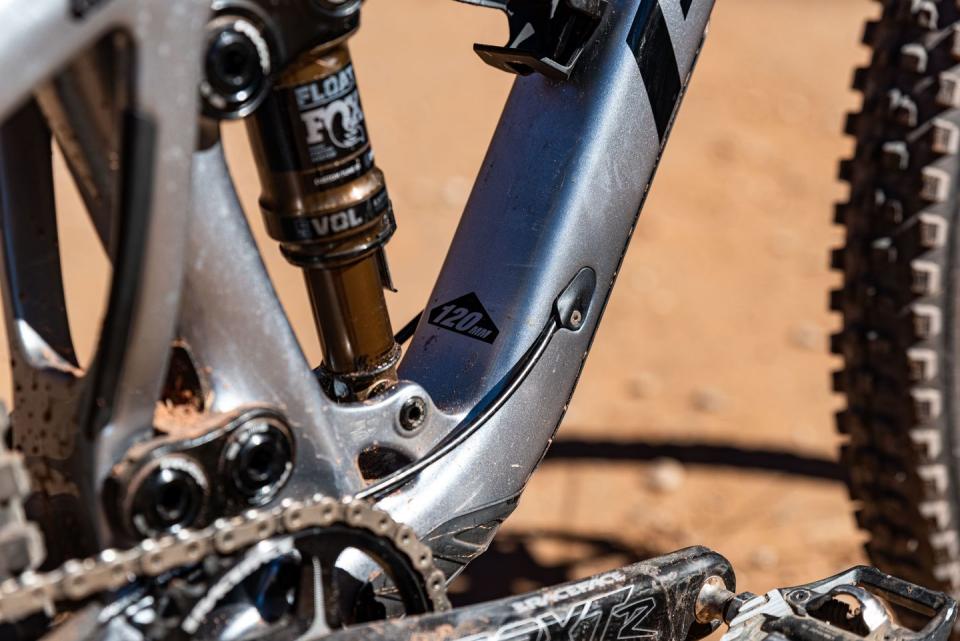
At this point, most mountain bikers know that a light 29er with DW-Link suspension climbs well. But I’m still going to repeat it: the Trail 429 climbs great. Power transfer is crisp, and there’s no perceptible bob. The 429’s suspension traces the ground well and offers excellent traction. This bike is brilliant at punching up short rocky pitches where the bike’s weight, stiffness, efficient pedaling manners, and sensitive suspension work together to slingshot you up and over.
As the trail turns steeper and you transfer your weight further rearward, the Trail 429’s rear suspension stays high in the travel, eliminating wallow and keeping the front wheel tracking accurately. The DW platform also provides a good floor to push off when you need to pop up and over obstacles.
I am certain there are riders who will look at the 75.0/75.5 degree seat angle and think it’s not steep enough. I’d counter that it is plenty steep for most of us: Because the Trail 429 has a good platform and doesn’t settle too deep into its travel on uphills like on some other bikes, it doesn’t need a crazy seat angle to keep you over the pedals on climbs.

With the updated top tube lengths and reach, the Trail 429 is a rangy bike that provides a comfortably stretched out cockpit for long climbs. But that also means that you'll need to be judicious about pressing down the front end when steering while seated. The long-ish wheelbase also means the new Trail 429 doesn’t dance through tight terrain at low speeds like the previous generation, which had a 20mm shorter wheelbase. But it’s at least on par with its direct competition, and perhaps a little better because the 429 Trail is so crisp and light.
Turning downhill, Pivot’s Trail 429 is precise and balanced. It’s surprisingly composed when pounding through chunk, with impressive overall stiffness given the XC wheels and light frame. I expected more shuddering and deflection as I worked my way down Ahab, but the bike tracked true and felt reassuringly robust.
Like other good bikes with this amount of travel, rough terrain becomes easier once you pick up enough speed to skip over the top of bumps—when you do that, the bike feels fast. Though sensitive off its very top, the rear suspension ramps quickly giving it a firm and snappy feel overall.
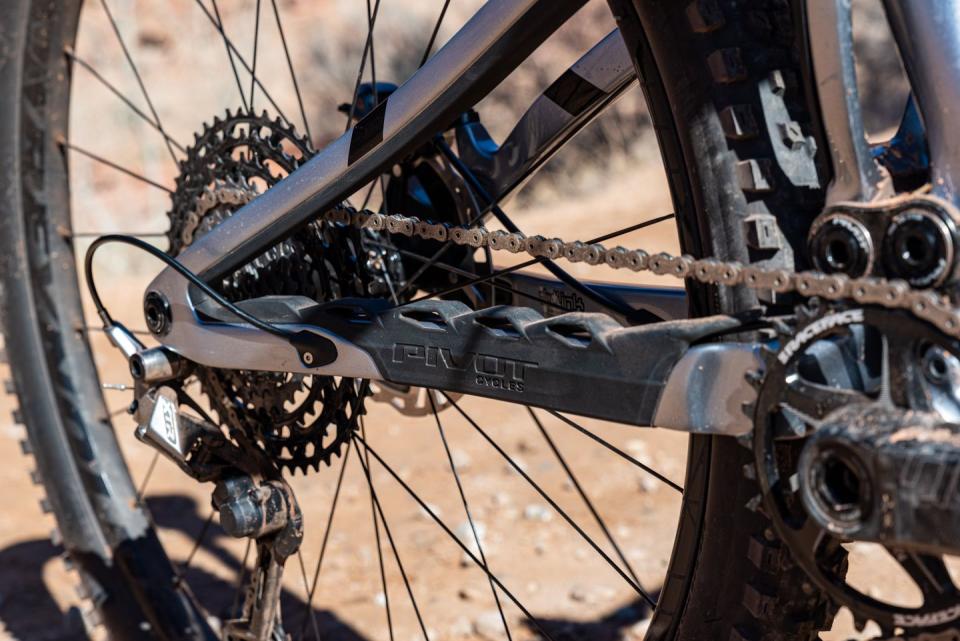
Pivot ships the Float DPS-equipped bikes with Fox's largest air volume spacer (0.95 cubic inch). On Ahab, I used full travel but never felt the bike bottom, which is exactly what I want. However for mellower trails with fewer drops and less chunk—the kind of stuff I'd typically ride on a bike like this—I’d drop down a volume spacer size, which will also make the suspension feel a little plusher overall.
The Trail 429’s long rider compartment and somewhat low BB provided a balanced position, and the low top tube provided clearance to throw the bike around as needed. The steering is sharp and accurate, and the front end is stable but not overly so—perfect for a bike that’s built for long climbs and railing flatter trails as much as it’s intended to descend.
New Shock Mounts and Other Frame Updates
The most obvious change to the new Trail 429 is the move from horizontal shock orientation to vertical shock. This makes the bike look like either a bigger version of Pivot’s Mach 4 SL cross country bike or a smaller version of the amazing Switchblade—either way, there’s clearly some shared design language. According to Pivot, the new shock orientation allows for a more compact frame, improves the fitment of Fox’s Live Valve system, and improves standover clearance.

Suspension tinkering goes beyond shock orientation. In an email, Pivot’s president Chris Cocalis said, “It’s a more progressive bike, but also a bit plusher off the top so that you get better small bump compliance.” The pedaling performance also got honed, “When you get out of the saddle and have to crank like you’re on an XC bike, it cranks like you’re on an XC bike.” Though you can fit a coil-over shock on the new Trail 429, Cocalis emphatically states the 429 Trail’s suspension is tuned specifically for an air shock.
Pivot cut 300 grams from the previous frame, making the claimed frame weight (with shock) 5.9 pounds—almost identical to the weight of the 100mm Mach 4 SL XC bike. A light frame is a good way to make a light bike: my review bike with the Team XTR build came in right about 27 pounds. Note this is the lightest build, so all other versions will be heavier. The company also tweaks frame stiffness for each frame size.
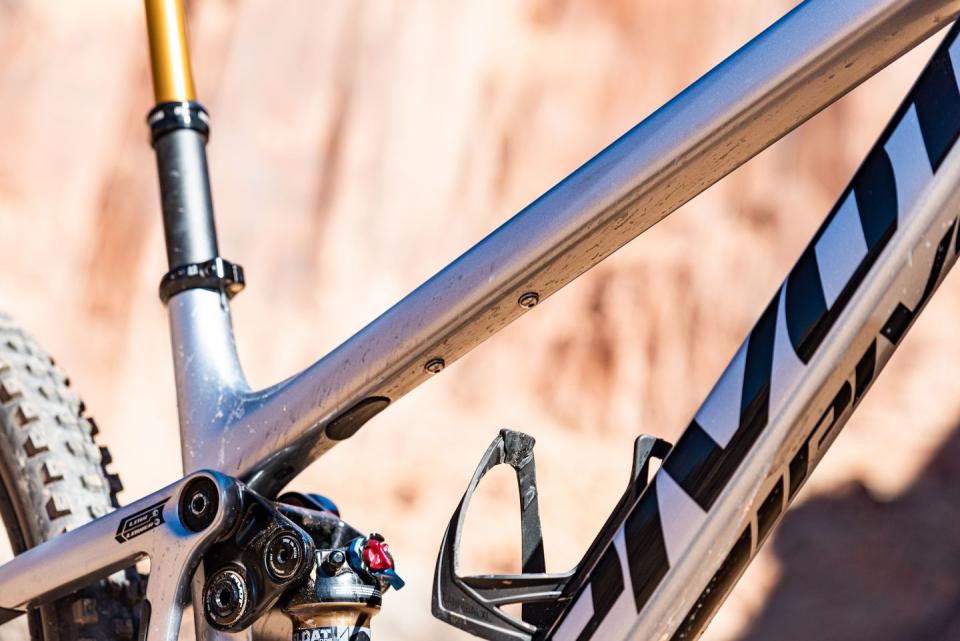
In addition to the traditional water bottle mounting point on top of the downtube (all sizes fit a large bottle inside the frame), there is one mount point under the top tube, one under the BB shell, and one under the downtube. The mount under the BB shell has a recess to accommodate Pivot’s Phoenix Dock system mounting plate. The plate also serves as the hatch to access the inside of the frame to aid dropper-housing routing.
Other details to note: The bike has Super Boost Plus 157 rear hub spacing, press-fit 92 BB shell, ISCG05 tabs, and clearance for 29 x 2.6-inch tires.
Pivot Trail 429 Geometry Changes
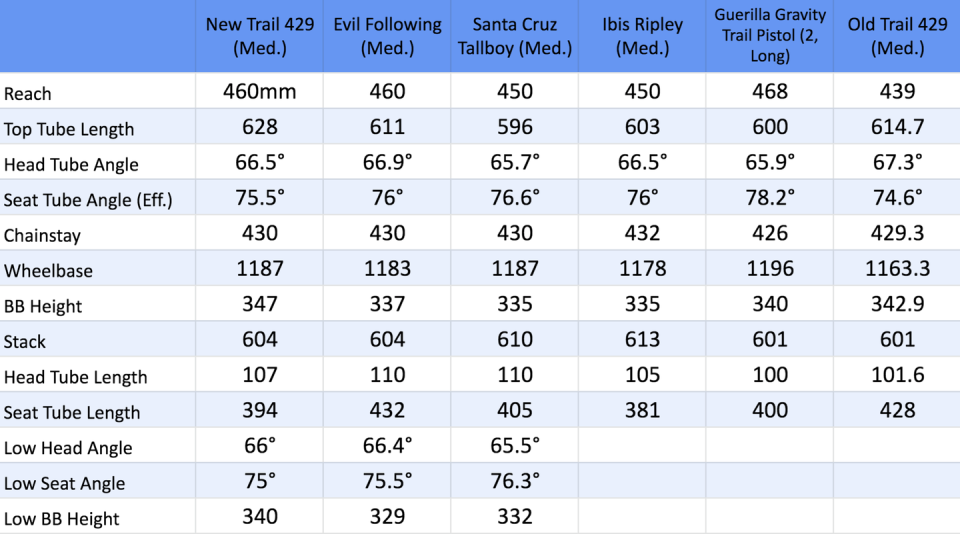
Guess what? The new Trail 429 has a slacker head tube angle, steeper seat tube angle, longer reach, and longer wheelbase than its predecessor. I know—shocking. The reach and top tube length changes are the most dramatic: a size medium’s reach increases 21mm, while the top tube length increases a bit more than 13mm. The new bike also gets a two-position flip-chip—“low” and “lower”—that alters head and seat angles 0.5 degrees and changes BB height +/- 7 millimeters.
My geometry table shows how the geometry changes from the previous to the new generation of Trail 429, and how it compares to some of its competitors. As you can see, you can almost throw a blanket over the new Trail 429’s geometry, and that of its biggest competitors—the Evil Following, Santa Cruz Tallboy, and the Ibis Ripley.
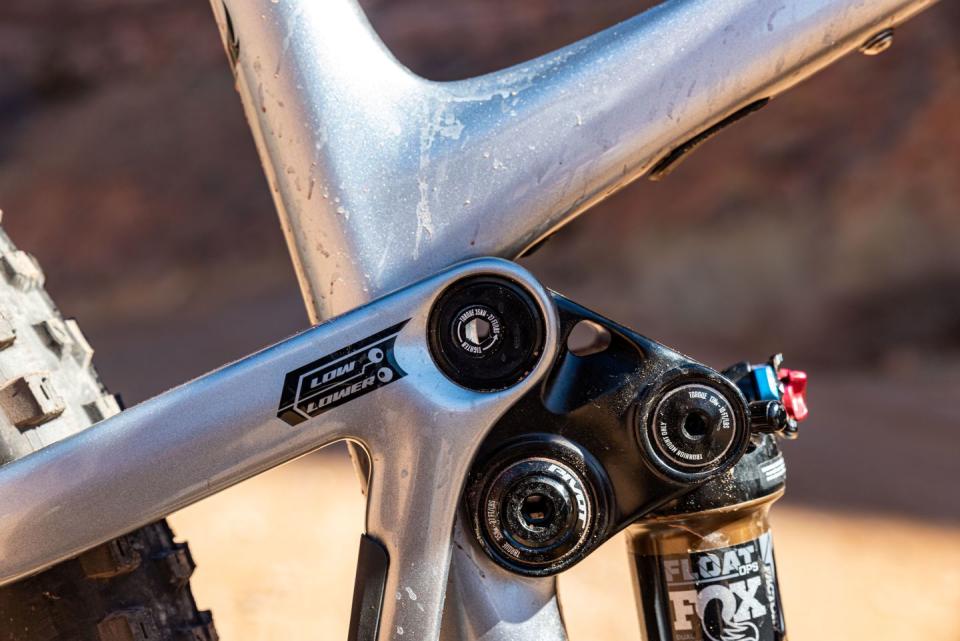
Like the previous generation, this bike is cleared to run a plus setup with 27.5 wheels and up to 2.8-inch tires (on 40mm inner-width rims). With the 27.5+ wheel setup, the company recommends you run the bike in the higher “low” setting and install Pivot’s plus-17mm lower headset cup to prevent the BB from sitting too low. The bike is also cleared for a mullet set up with a smaller rear wheel: Pivot recommends the “low” setting for this as well.
Pivot Trail 429 Build Kits
The 429 comes in 14 different builds with prices starting at $5,599. It’s not an overwhelming as it sounds: There are three build buckets—Race, Pro, Team and each has several options.
All three build buckets have a Shimano and SRAM drivetrain and brake option. Race builds have a Shimano SLX/XT blend ($5,599) or SRAM X01/GX blend with Guide brakes($5,899). Pro builds consist of a Shimano XT/XTR blend ($6,699) or a SRAM X01 drivetrain with G2 brakes($7,199). Team builds use Shimano XTR ($8,899) or SRAM XX1 AXS with G2 brakes ($10,399).

Pro and Team builds have three suspension options. These are suspension only changes—the rest of the build kit remains the same. The standard option—shared with the Race builds—is a Fox Float 34 FIT4 fork with Float DPS shock (Race builds get Performance-series parts, all other builds get Factory stuff).
If you want more capable suspension, the Pro Enduro ($6,999, $7,499) and Team Enduro ($9,199, $10,699) builds have a 140mm Fox Float 36 GRIP2 fork with Float DPX2 piggyback shock.
And if you want next-level suspension you step up to the Pro Live ($8,799, $9,299) and Team Live ($10,999, $12,499), which have Fox’s electronically controlled Live Valve suspension.
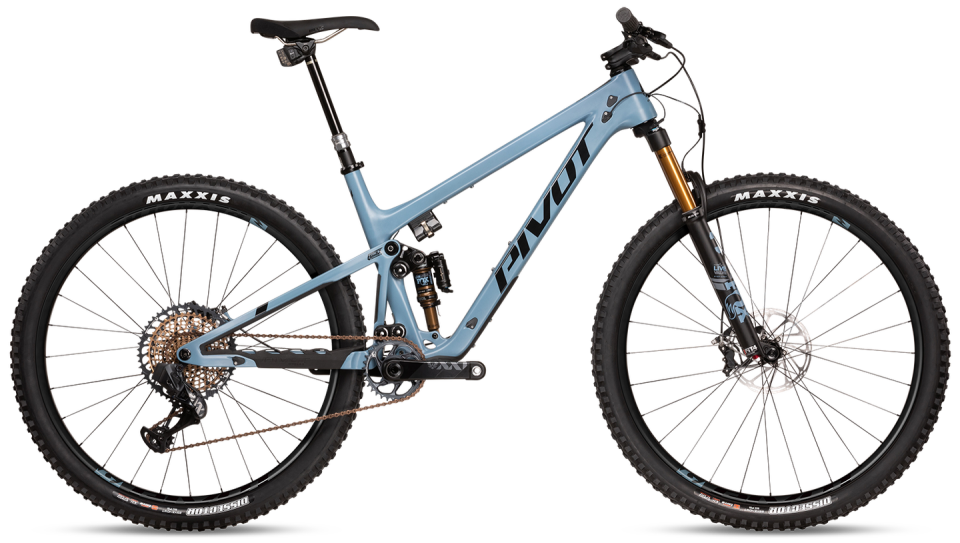
Pro builds have an additional upgrade option not offered by Race or Team: For $1,300 riders can upgrade the stock DT-Swiss XM1700 wheels to a wheelset with Reynolds Blacklabel 309/289 carbon rims and Industry Nine hubs (Hydra rear). This 1,470 grams (ish) wheelset is standard on the Team builds.
Regardless of build, all bikes have Fox suspension, 1x12 drivetrain, four-piston brakes, dropper post (travels: XS-100mm, SM-125mm, MD-150mm, LG-175mm, XL-200mm), Pivot lock-on grips, Pivot handlebar (780mm), Pivot stem WTB Volt saddle, and Maxxis Dissector 2.4-inch (WT, TR, 3C, EXO, Maxxterra) tires front and rear.
How the 429 Compares to the Best Trail Bikes
The new Trail 429 lands in a very competitive field that contains some of my favorite mountain bikes. It goes head to head with the likes of the Evil Following, Santa Cruz Tallboy, and Ibis Ripley. They’re all amazing bikes with genre-muddling capabilities. They’re similar in many ways, yet each has a distinct feel.
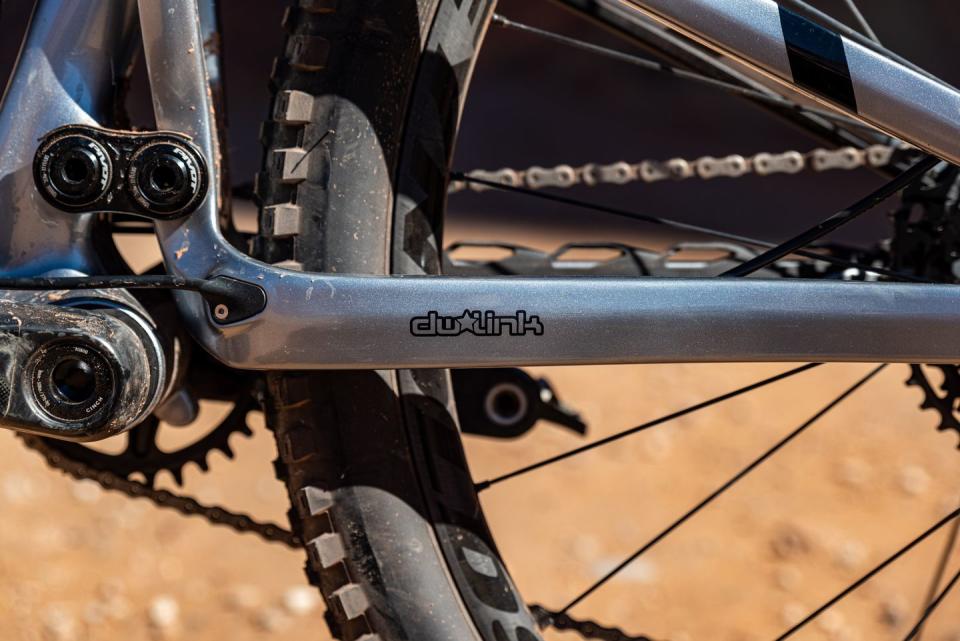
For reasons of personal preference, some of which I can’t yet fully explain rationally, I love the Evil a little more than the others. But when I set aside personal preference and look at these bikes objectively, the Trail 429’s overall performance makes it the best choice for most riders. It is very light, climbs fast, and descends with aplomb. The other bikes do also, but the Pivot raises the bar for overall performance—particularly climbing and on rolling trails—without any tradeoff on the descents. It’s sharp and precise when it needs to be, playful and forgiving when you want it to be. This bike is a wonder.
You Might Also Like

